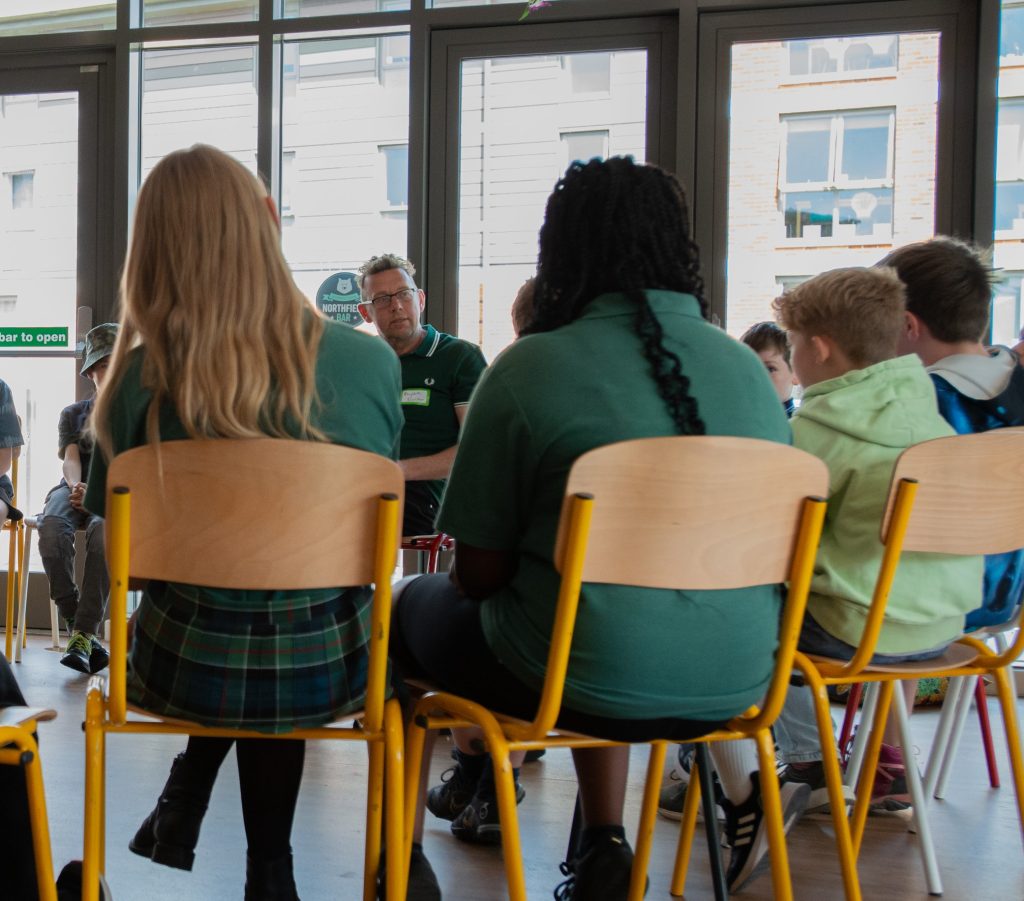4 Teacher and student roles in spaces of uncertainty
Creating with uncertainty is highly demanding of effort, to use the different intellectual and emotional resources we each have, whether as students or teachers. It requires us all to cope with unpredictability, to think on our feet, to engage with nuance, and to emphasise the richness of the experience of others (including nonhuman species) who may be very different to us.
This demands a language—and by this we include a multitude of nonverbal communication—of considerate challenge and critique that is not simply obedient and pleasing. It requires a mind-set from both teachers and students alike that it is absolutely okay to assume that ‘we are going to think from an alternative perspective’, and that we can ‘approach/do things another way’, by asking questions, pondering and wondering ‘what happens if . . ?’ It also requires us to take seriously diverse ways of communicating and engaging from all students.
Core questions for creating with uncertainty
- What do you see? hear? sense?
- What emotions do you feel?
- What do you think about it?
- What do you make of it?
- What does this demand of you?
- What role can I play in supporting you?
Teacher role
Teachers play an important role in requiring students to consider what absorbed curriculum knowledge might mean for themselves, as well as how they might engage with others in their communities. What students think, feel or do as a result of undertaking activities should not be dictated; nor can it be predicted. There are four key areas for teachers to attend to:
1. Share your knowledge
-
- Share what you know with students (where this may be useful) and be clear about what you don’t know.
- Draw students’ attention to that which you want to preserve and believe is worthy of study.
2. Invite and support all students to share their experiences
-
- Work from the assumption that every student can engage with uncertainty.
- Listen to what students know, what they don’t know, their questions and feelings.
- Support students to articulate – in a way appropriate to them – how they experience the subject matter.
- Use creative and deliberative activities that encourage students to surface/reflect on/communicate their perspectives.
- Require students to listen carefully to others.
- Support students to identify a respectful uncertain language e.g. ‘Let’s try out another way’ ‘I wonder whether . . .’
- Be careful not to push your own ideas onto students.
- Attend carefully to what concerns students and what touches them deeply (and where a window of tolerance is shaken).
3. Challenge students to think deeply together and to verify what can be claimed about the topic
-
- Require students to pay close attention to what has been shared.
- Support students to investigate, speak about, persuade and deliberate together.
- Require students to justify their workings out (while refraining from asserting one right answer yourself).
- Challenge students to question themselves about what their ideas might mean for themselves/others.
- Encourage students not to settle for comfortable but unsatisfying solutions.
- Introduce inconvenient truths and difficult questions in response to contributions that are concerning.
4. Reflect on the possible educational value of engaging with uncertainty
-
- Discuss what was possible or limited in opening up spaces for uncertainty.
-
Core verification questions to ask students
- Does what you want/desire affect others (human/nonhuman)?
- How do others experience this?
- What questions would you expect others to ask you about this?
- How can you accommodate different views?
- When others think differently, what more do you need to know? How can we find out? What difference might that make?
- When people act in ways you disagree with (eg buying fast fashion; cutting down trees) can you imagine what they might see/think/feel/imagine?
- What would you like to ask those who think or act differently? What would you like to say to them? How could you do this in a way that they can hear? What might they say to you? What can you teach each other?
Student role in this uncertain space
This demanding work requires students to:
-
- Listen to what others know, including other students, teachers and others.
- Share what they know, think and feel, as well as their own experiences.
- Ask difficult questions of themselves and others (including of peers, teachers, experts, family).
- Communicate what they think and feel in different ways (e.g. speaking, drawing, writing).
- Reflect deeply and verify their work.
- Negotiate a way forward with others.
- Be open to noticing and being surprised by what they and others can do.
Role of everyone in this uncertain space
-
- Follow the ground rules or revise them together where necessary.
Core questions for creating with uncertainty for sustainability
-
- What are your sustainability interests and concerns?
- What do you feel you already know and what do you want to know?
- How do you know? (ie sources of existing knowledge)
- What puzzles, worries, confuses you?
- What do you notice as you walk/look around: what questions/feelings/thoughts does this raise for you?
- What do you hope for and why?


